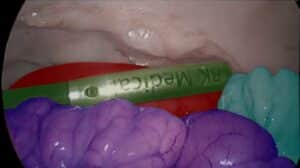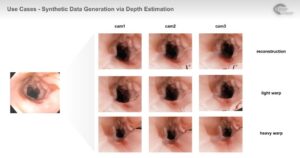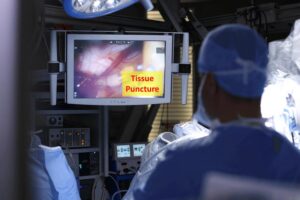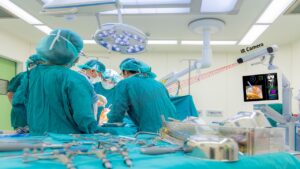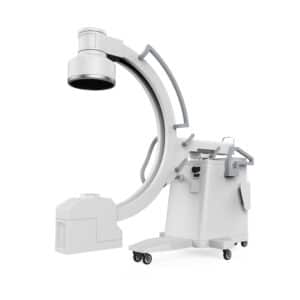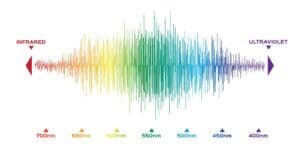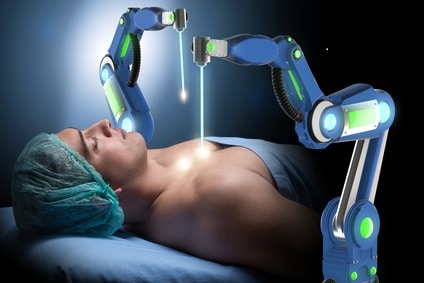
Remotely operated robots in the surgery room are surgeon-controlled robots whose mechanical arms replace those of the surgeon – providing several advantages. During surgery, the robot is positioned near the patient while the surgeon is sitting in front of a dedicated operating console. The robot can make extremely precise movements, such that are not possible by a human hand. From a machine vision aspect, the system provides a magnified 3D view into the patient body. Here, just like with the other systems reviewed in this article, a few operations must be performed to have this 3D high definition view. First, any captured image must be corrected to have no deformations. A calibration is activated to have an accurate pixel size (dimensions matching). Now, since the system (robot, patient and the surgery tools) needs to be viewed simultaneously on the monitor, a registrations matrix is calculated. They allow overlaying the information in a single view, including the patient body (CT), the surgery room and tools. During the surgery, this system tracks the surgeon tool and accurately shows its position and orientation. This concept is common to all robotic systems which use imaging technology during medical surgery.
Segmentation of the CT is an additional machine vision algorithmic operation, performed to select the bone structure from surrounding tissues. Both classical and advanced algorithms, CNN for example, are used for this task. The most recent deep learning algorithms have higher success rates when image quality is low or the bone structure is damaged.
Medical Robotics Tasks
Medical robots can deal with some forms of cancer, in their controlled (early) stages.
Medical robots performing surgeries typically fulfill three operations: Pre-Op Analytics, Intra-Op Guidance, Intra-Op Verification.
The Pre-Op Analytics component is a design software (CAD system) that enables the surgeon to plan the surgery. In orthopedic surgeries, the planning involves the placement procedure and the mechanical assemblies used to fix an orthopedic problem. Machine vision algorithms, working on the images before the planning session (like calibration and distortion correction), provide the accuracy level expected from robots in medical applications.
During the surgery (Intra-Op Guidance), the robot arm is automatically set to position and it directs the mechanical parts to act as designed – making sure that implementation accurately matches the surgery design.
Other systems with a close relevance are Virtual Reality (VR) systems. For example, a simulator for complex and risky surgeries like brain surgeries. It allows the surgeon to practice before the surgery and select the best approach for the surgical procedure. This type of VR systems works with the patient’s CT and MRI files. In the background, pre-process machine vision algorithms (such as calibration, distortion correction and registration procedures) are executed.
More information and examples about machine vision algorithms supporting medical procedures are found in our Orthopedic Surgery section.
Machine Vision and Robots in Medical Applications by RSIP Vision
RSIP Vision has the knowledge and experience in both computing and medical fields to provide top-level performance in medical robots using advanced machine vision and registration algorithms.

 Surgical
Surgical